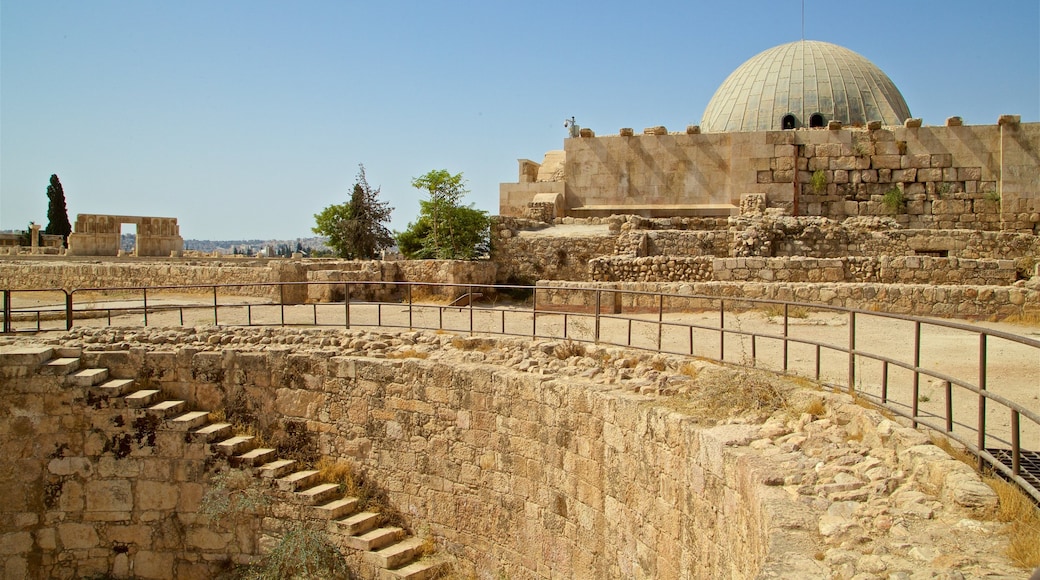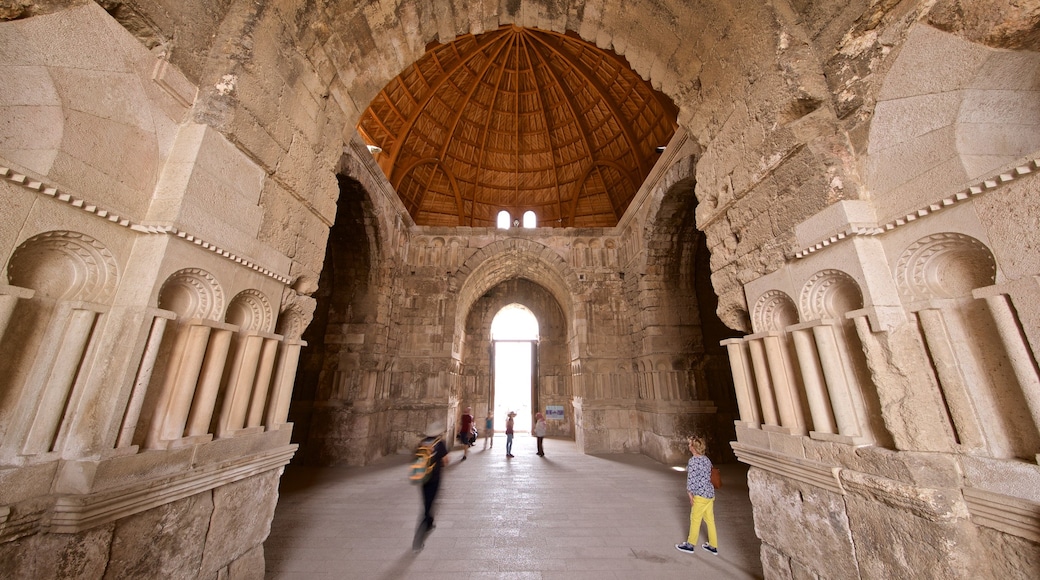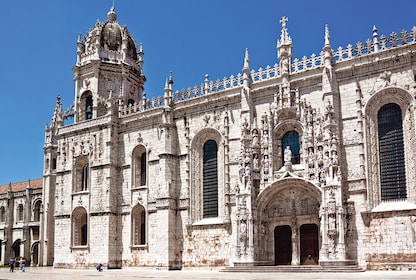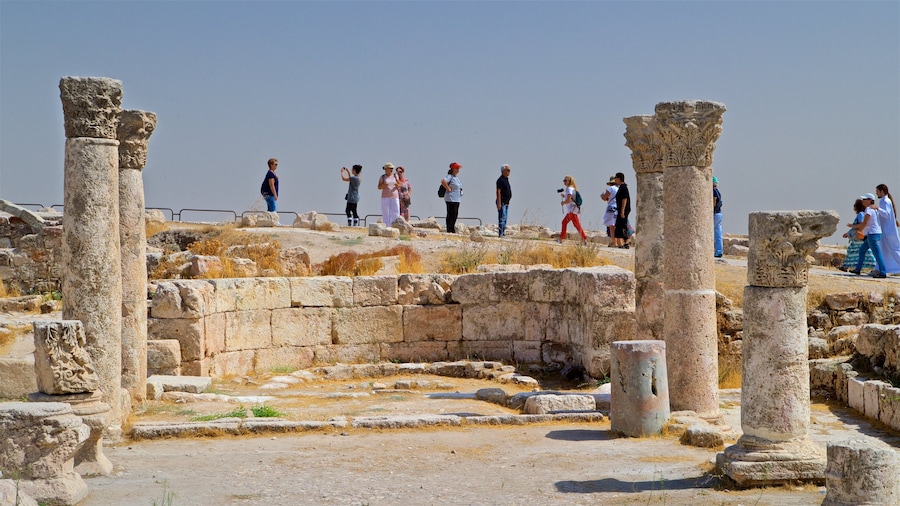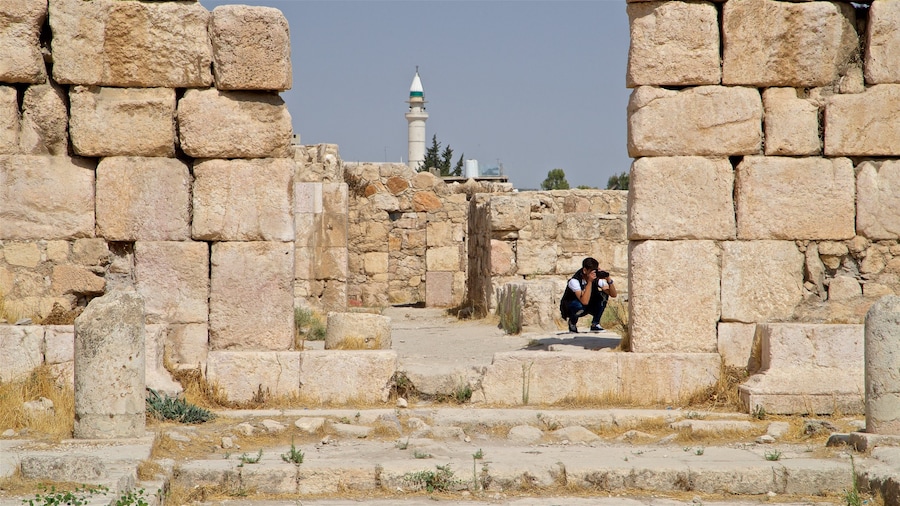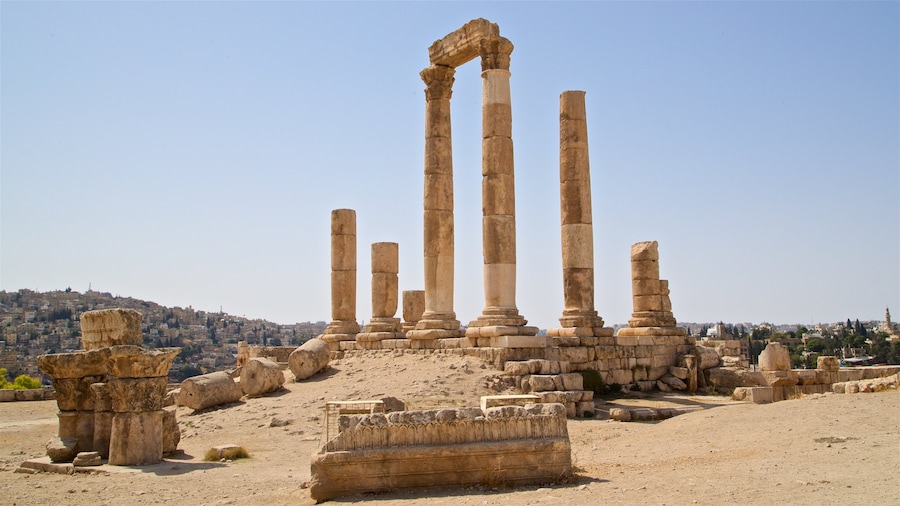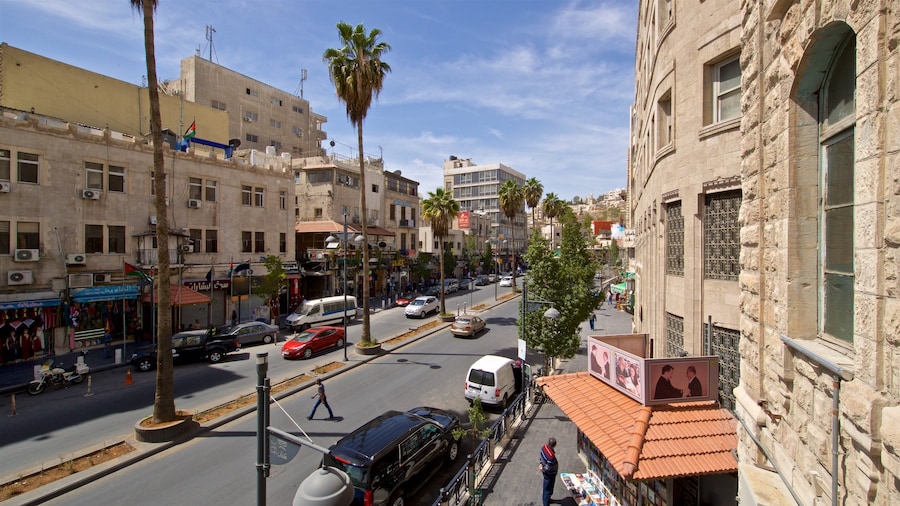คุณลักษณะอันโดดเด่นมากที่สุดของอาคารพระราชวัง Umayyad คือบริเวณห้องโถงทางเข้าที่มีหลังคาโดมประดับอยู่ด้านบน เที่ยวชมสิ่งปลูกสร้างอันงดงามแห่งนี้ซึ่งยืนหยัดมาเป็นเวลาหลายพันปี เพื่อซึมซับประวัติศาสตร์และชมทิวทัศน์ที่สวยงามอย่างแท้จริง
พระราชวังแห่งนี้สร้างขึ้นโดย Umayyad Arabs ตั้งแต่ประมาณค.ศ. 730 และแต่เดิมใช้เป็นที่พำนักและที่ทำการของเจ้าเมืองอัมมาน ต่อมาในปีค.ศ. 749 หลังจากใช้งานมาหลายทศวรรษ พระราชวังแห่งนี้ถูกทำลายจากเหตุแผ่นดินไหวและหลงเหลือแต่เพียงซากปรักหักพัง หลังคาโดมอันสวยงามที่คุณเห็นในปัจจุบันนี้ถูกสร้างขึ้นใหม่โดยทีมงานชาวสเปนในช่วงปลายทศวรรษที่ 1990 โดยเกิดประเด็นโต้เถียงกันมากมายเกี่ยวกับการก่อสร้าง เนื่องจากผู้เชี่ยวชาญบางคนไม่เห็นด้วยที่ห้องโถงมีหลังคาทรงโดมในศตวรรษที่ 8 แม้จะยังไม่ทราบความจริงแน่ชัด แต่ผลลัพธ์ที่ได้กลับน่าทึ่งและสวยงามเหมาะแก่การถ่ายภาพ ดังนั้น อย่าลืมนำกล้องติดตัวไปด้วยเมื่อมาเยือนที่นี่
เริ่มต้นการท่องเที่ยวในพื้นที่ทางตอนใต้สุดด้วยการเดินผ่านห้องโถงทางเข้า ซึ่งเป็นอาคารที่ได้รับการสงวนรักษาไว้อย่างดีที่สุดในกลุ่มอาคารพระราชวังนี้ ห้องโถงแห่งนี้สร้างขึ้นทับโบสถ์ไบแซนไทน์และก่อสร้างให้มีรูปทรงกากบาท
จากนั้น เดินผ่านห้องโถงทางเข้าต่อไปจนถึงจัตุรัสขนาดใหญ่และถนนซึ่งเรียงรายไปด้วยเสา ซึ่งเส้นทางนี้เดิมเคยนำไปสู่อาคารที่ทำการและที่พำนัก โดยนักโบราณคดีเชื่อว่ามีทั้งหมดเก้าห้องด้วยกัน แต่จนบัดนี้ขุดพบเจอเพียงสี่ห้องเท่านั้น
และที่พักขนาดใหญ่จะสงวนไว้สำหรับเจ้าเมืองอัมมาน เดินต่อไปบนทางเดินตามแนวเสาจนไปถึงที่พำนัก ซึ่งแม้โครงสร้างจะเหลือเพียงซากปรักหักพัง แต่สามารถจินตนาการถึงสถานที่อันใหญ่โตหรูหราได้ไม่ยาก เดิมสถานที่แห่งนี้มีจัตุรัสขนาดใหญ่ตั้งอยู่เคียงข้างกับห้องบัลลังก์ใต้หลังคาโดม ซึ่งเป็นสถานที่สำหรับให้ผู้ปกครองออกว่าราชการ
มองหาช่องประตูด้านหลังพระราชวังที่เปิดสู่จัตุรัสซึ่งมองเห็นทิวทัศน์ของขุนเขา ซึ่งพื้นที่นี้น่าจะสงวนไว้สำหรับให้เจ้าเมืองใช้ส่วนตัวเท่านั้น
ซื้อตั๋วหนึ่งใบเพื่อเข้าชมอาคารทุกแห่งภายในกลุ่มอาคารซิทาเดล รวมถึงพระราชวัง Umayyad โปรดทราบว่านักท่องเที่ยวสามารถเข้าชมฟรีเมื่อแสดง Jordan Pass


